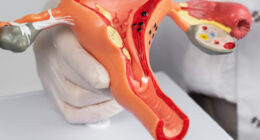Prostate cancer occurs when abnormal cells within the prostate gland start growing uncontrollably, forming a malignant tumour. Last year alone, over 25,400 men were diagnosed with prostate cancer. On average, this cancer is typically diagnosed around the age of 70. Prostate cancer is the most frequently diagnosed cancer in Australia, affecting around one in six men by the time they reach 85. Early-stage prostate cancer, also known as localised prostate cancer, indicates that cancer cells have grown but haven’t spread beyond the prostate gland. Advanced prostate cancer is categorised into two stages: locally advanced, where cancer has extended beyond the prostate to nearby areas or glands, and metastatic, where cancer has spread to distant parts of the body.

Prostate cancer signs and symptoms
The signs and symptoms of prostate cancer can vary, and some men may not experience any symptoms at all, especially in the early stages. However, here are some symptoms you may notice:
1. Urinary Changes: Difficulty in starting or stopping urine flow, weak or interrupted urine flow, frequent urination (especially at night), pain or burning sensation during urination, and the feeling of not emptying the bladder.
2. Blood in Urine or Semen: This can appear as pink, red, or brown-tinted urine or semen.
3. Erectile Dysfunction: Difficulty in achieving or maintaining an erection.
4. Pain: Discomfort or pain in the pelvic area, lower back, hips, or thighs. In advanced stages, this pain can extend to other areas like bones.
5. Other Symptoms: Fatigue, unexplained weight loss, and swelling in the legs or pelvic area due to lymph node involvement (rare).
Note that these symptoms can also be caused by non-cancerous conditions like urinary tract infections or benign prostatic hyperplasia (BPH). However, if you experience any of these symptoms, especially if they persist or worsen, it’s crucial to consult a healthcare professional for proper evaluation and diagnosis. Early detection can significantly improve the prognosis of prostate cancer.

Causes of prostate cancer
Here are some factors that can increase your risk of developing prostate cancer:
Age: The risk of prostate cancer increases with age, especially after 50 years old.
Family History: A family history of prostate cancer, as well as breast or ovarian cancer, particularly if there are BRCA1 and BRCA2 gene mutations, can elevate your risk.
Genetics: Having a father or brother who was diagnosed with prostate cancer before the age of 60 increases your own risk.
Hormonal Factors: There is an association between high levels of testosterone, a male hormone, and an increased risk of prostate cancer. The relationship between Hormonal Factors and Prostate cancer is still being studied.
It’s important to note that while these factors can contribute to an increased risk, not everyone with these risk factors will develop prostate cancer. Likewise, some men without these risk factors may still develop the disease. Regular screenings and discussions with your healthcare provider can help in managing your risk and detecting prostate cancer early if it does occur.
Diagnosis of prostate cancer
The following tests are to be carried out if you suspect you have prostate cancer:
Digital rectal examination
Biopsy
Further tests: You may need to run other tests such as MRI or CT if cancer is detected in your prostate.

Treatment for prostate cancer
Treatment for prostate cancer depends on various factors, such as the stage of the cancer, the aggressiveness of the tumour, the patient’s overall health, and their personal preferences. Common treatment options include:
Active Surveillance: For low-risk prostate cancer, where the cancer is slow-growing and not causing symptoms, active surveillance involves regular monitoring through PSA tests, digital rectal exams (DREs), and sometimes imaging tests.
Surgery: Radical prostatectomy involves the surgical removal of the prostate gland and surrounding tissues. It is a common treatment for early-stage prostate cancer. Minimally invasive techniques like robotic-assisted surgery are often used.
Radiation Therapy: This is the killing of cancer cells with the use of high-energy rays. This can be done either externally (external beam radiation therapy) or internally (brachytherapy). Radiation therapy may be used as the primary treatment or after surgery to eliminate any remaining cancer cells.
Hormone Therapy: Also known as androgen deprivation therapy (ADT), hormone therapy aims to lower or block the production of male hormones (androgens) that can fuel the growth of prostate cancer cells. It may be used alone for advanced or metastatic prostate cancer or combined with other treatments.
Chemotherapy: Chemotherapy uses drugs to kill cancer cells or slow their growth. It is typically used for advanced or metastatic prostate cancer that has spread to other parts of the body.
Immunotherapy: These are drugs that help the immune system target and destroy cancer cells. Some immunotherapies are approved for advanced prostate cancer that has not responded to other treatments.
Targeted Therapy: Targeted therapy drugs specifically target cancer cells while causing less harm to normal cells. Combination with other treatments for advanced prostate cancer may be used with Targeted Therapy.
Treatment decisions are often made through a collaborative effort involving urologists, oncologists, radiation oncologists, and other healthcare professionals. The goal is to tailor the treatment plan to each patient’s unique circumstances and preferences, aiming for the best possible outcome while considering quality of life factors.

Conclusion
Prostate cancer is a significant health concern, but early detection and advancements in treatment have improved outcomes for many patients. It’s essential for men, especially those at higher risk, to be proactive about their prostate health through regular screenings and discussions with healthcare providers. By raising awareness and understanding prostate cancer, we can empower individuals to take charge of their well-being and strive for better health outcomes.









